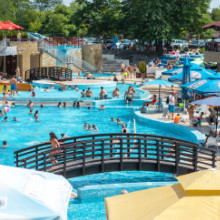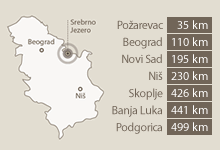Viminacium, located 40 km from the Silver lake, is one of the most important Roman cities and military camps in the period from I to VI century. It is located near the city of Kostolac, at the confluence of Mlava and Danube rivers.
During the reign of the kind Hаdriаn (117–138), Viminacium became the centre of the Roman province Upper Mezia, whose territory was spreading all over Serbia today. The city was a place where the military gathered many times, and went to wars from there, and in some point it had the right to coin its own money, which had images of wives of the Roman emperors on them.
The Danube location has enabled Viminacium to have a developed ceramics industry, to process metal and have numerous artistic shops. Over 50.000 artefacts, among which are the unique findings of world-wide importance: surgical instruments for eye surgery, pen made of bird bone – Calamus, water clock – Klepsidra and frescoes from the IV century have been discovered in a wall tomb in Pećina, not far from Mlava. Inside and around the town, they discovered an amphitheatre, monumental buildings, rich thermal bathrooms and traces of developed infrastructure, mostly streets and sewage system.
It was devastated many times by the Goths and the Avars, and destroyed by the Huns in 441. Today, it is an important archaeological site, and the story of its history, the rise and fall of the Roman town as reached international audience.











